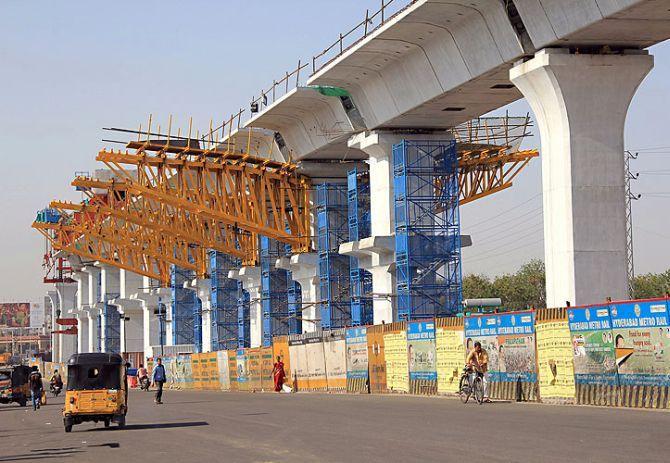 | « Back to article | Print this article |
The investment cycle might not be showing signs of revival but Larsen & Toubro (L&T) is not revising its order inflow forecast (consolidated level) downwards.
 Larsen & Toubro expects order inflows from core engineering and services businesses to grow 20 per cent year-on-year.
Larsen & Toubro expects order inflows from core engineering and services businesses to grow 20 per cent year-on-year.
At the end of the first half of FY15, its order inflows stand at Rs 44,700 crore (Rs 447 billion).
If it has to grow these 20 per cent, it would need fresh orders of Rs 1,24,100 crore. Antique Stock Broking believes there is a possibility of the firm outperforming its guidance, on better traction in India and West Asia.
That is where the good news ends, for new concerns are emerging on its order wins and receivables.
The differential between bids shows competition is intensifying for L&T. In case of any inflation in labour or raw material prices, these projects could be at risk.
Other than this, L&T's working capital requirement as a percentage of sales continues to remain elevated.
Kotak Institutional Equities expect losses to double in FY15 to Rs 8 a share, led by the roads portfolio (commissioning of projects won in FY12 and return to normal depreciation).
While the losses on road projects would continue in FY16, these could be offset by a possible recovery in the power equipment segment.
The firm will also have to continue to fund development projects over FY15-17.
Kotak estimates Rs 4,500-5,000 crore equity funding over FY15-17.
There are concerns on the new projects the company is bidding for.
The recent orders it has bid for are at very competitive prices and could run into risk if costs go up.
The biggest concern stems from the fact the firm is losing its bargaining power with stakeholders.
Deutsche Bank says rising debtor days and low customer advances imply significant net working capital requirement.
"On a consolidated basis, we find net working capital/sales as at FY14 is at 30 per cent."
Over the past 23 years, post reforms, this is now close to the historical peak of 35 per cent reported by the company in FY01."
Also, the differentials in West Asia between L1 and L2 bids are at 24 per cent. In road projects, the differential is at 3-6 per cent.
Analysts claim dividend growth has come through value unlocking and borrowings.
They believe the stock is factoring in large recovery in the capex cycle, which implies there could be a downside risk to current valuations.